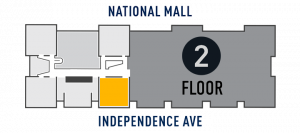Launched in December 1961, OSCAR 1 (Orbiting Satellites Carrying Amateur Radio) was the world's first non-governmental satellite. Built by a group of California based amateur radio operators for only 63 dollars, OSCAR I operated for nearly 20 days, testing radio reception from space. During that time, thousands of radio operators in 28 different countries detected the satellite's simple "hi-hi" morse code message.
OSCAR 1 marked the beginning of a program that continues to this day, under the auspices of the Radio Amateur Satellite Corporation (known officially as AMSAT) which operates approximately 20 OSCAR satellites as of the year 2000. The program has sparked innovations in spacecraft design and manufacture and enabled radio enthusiasts to participate in satellite communications.
The Museum's artifact is a scale model of the Oscar 1 spacecraft, donated by Project Oscar to the Museum in 1963.
Display Status
This object is on display in One World Connected at the National Air and Space Museum in Washington, DC.

Object Details
Country of Origin
United States of America
Type
MODELS-Uncrewed Spacecraft & Parts
Manufacturer
Project Oscar, Inc.
Dimensions
3-D (antenna off): 26.6 × 34 × 24.5cm (10 1/2 in. × 1 ft. 1 3/8 in. × 9 5/8 in.)
3-D (antenna on): 26.6 × 34 × 75.5cm (10 1/2 in. × 1 ft. 1 3/8 in. × 2 ft. 5 3/4 in.)
Materials
Aluminum
Ferrous Alloy
Non-Magnetic White Metal
Paint
Metallic Tape
Inventory Number
A19640011000
Credit Line
Gift of Project Oscar, Inc.
Data Source
National Air and Space Museum
Restrictions & Rights
Usage conditions apply
For more information, visit the Smithsonians Terms of Use.